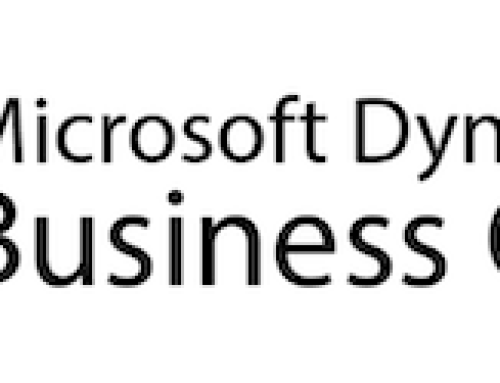Reprint from Avalara
What’s not for sale today? People sell an astonishing assortment of services: sand raking, dice inspecting, worm catching, and holding up cyclists’ bikes before a race. They sell chicken feet, lunch with Warren Buffet, and the meaning of life (purchased off eBay for $3.26). It’s an amazing, enterprising world.
No matter what your line of business – or what you sell – it’s essential to get sales and use tax right. Tax obligations vary by industry, and according to the goods and services each industry sells. They’re impacted by location, the nature of the transaction, and even the consumer. Getting tax right is challenging, particularly for companies that have an obligation to collect in multiple jurisdictions. It’s even more difficult when the tax authorities themselves don’t know whether or not tax should apply. And if they don’t know, how are you expected to get sales tax right?
What the devil is it?
The harder it is to categorize products and services, the more challenging it is to understand how existing tax rules apply to them. Should animal blood be taxed or exempt in California? How about tree removal services in parts of South Dakota plagued by pine beetles? Tools lost down holes in Wyoming? Believe it or not, these have all been topics of discussion in state legislatures.
This challenge of categorizing goods and services is compounded by advances in technology, which are responsible for such category-straining creations as digital goods and services. In a few short years, for example, technology has changed how we consume our news. Paper newspapers, while still enjoyed alongside morning cups of coffee, are increasingly being put aside in favor of online newspapers. This affects subscriptions, which impacts sales tax revenue, which alerts state tax departments and lawmakers of a need for a change. To wit, the California Board of Equalization recently updated its tax policy regarding electronic and paper newspaper subscriptions.
Digital downloads, such as e-books, may no longer be considered cutting edge, but they are still an area of inconstancy in the world of state sales tax. Some states, including New York, don’t tax e-books and other digital downloads because they don’t consider them to be tangible personal property. Yet Pennsylvania recently chose to tax digital downloads in the face of a credit down grade and a blooming deficit. Numerous other states, including Tennessee and Vermont, are still grappling with whether or not to tax digital goods and cloud computing services. Others, like Michigan, rely on Department of Revenue rulings to set tax policies related to this area.
Software has been around long enough that you’d think it would cause little confusion with respect to sales and use tax. And yet state tax departments are repeatedly asked to clarify their policies. Just last summer, The Virginia Tax Commission ruled that invoices for electronically delivered software must make clear that no software in tangible form was provided; without that proof, sales tax could apply. The addition of cloud computing services has only complicated the issue and created additional discrepancies between jurisdictions. For example, Vermont removed a tax on cloud computing services last year, about the same time Chicago was preparing to enforce compliance with its tax on certain cloud computing services.
Technology can impact tax in other ways, too. When announcing that Airbnb had decided to voluntarily collect and remit meals and rooms tax for its Vermont hosts, the Vermont Department of Taxes acknowledged, “It’s not always easy” to “fit our existing rules and regulations onto new structures of business.” This sentiment is echoed in tax departments and state legislatures across the country. Yet, businesses are often expected to comply with uncertain tax policies and can be penalized when they don’t.
Moving forward, it’s anyone’s guess how technological advancements will influence tax policy. Drones are becoming increasingly prevalent in business, especially for surveying farmland and real estate. Amazon, Walmart, and other businesses are exploring how drones can be used to make deliveries. On-demand drone services are already being sold. Each new service has to be examined and categorized: will it be exempt? Taxable? Answers are sure to vary from state to state.
Change is the only constant
Then there’s the fact that tax rules change, frequently and unpredictably. Last year, 257 sales tax changes took effect in 26 states. This year’s amendments, still being tallied, include:
- The elimination of a contentious tax on the sale of fitness classes in Missouri
- The exemption of half-baked pizzas from Nebraska sales and use tax
- The enactment of laws exempting feminine hygiene products in New York, Connecticut, Illinois, and possibly D.C.
What triggers change — politics, social consciousness, or the need to balance state budgets — is less important than the change itself, at least when it comes to tax compliance.
Use the cloud to tax the cloud
The inconstant nature of sales tax rates, rules, and policies makes compliance intrinsically challenging. It’s always been this way — just ask the people tasked with defining candy for the Streamlined Sales Tax project. Candy aside, it used to be clear what most new products and services were. That’s no longer true. Tax authorities must now grapple with determining the taxability of any number of novel products and services, not to mention how they are made, sold, bought or delivered.
It’s this uncertainty that can make managing sales tax difficult from growing companies and why tax automation software like Avalara AvaTax is now the industry standard for ensuring compliance. For more on this topic, check out 5 Reasons Why High Growth Companies Struggle with Sales Tax.
READ NOW
By, Guest Author, Avalara
















